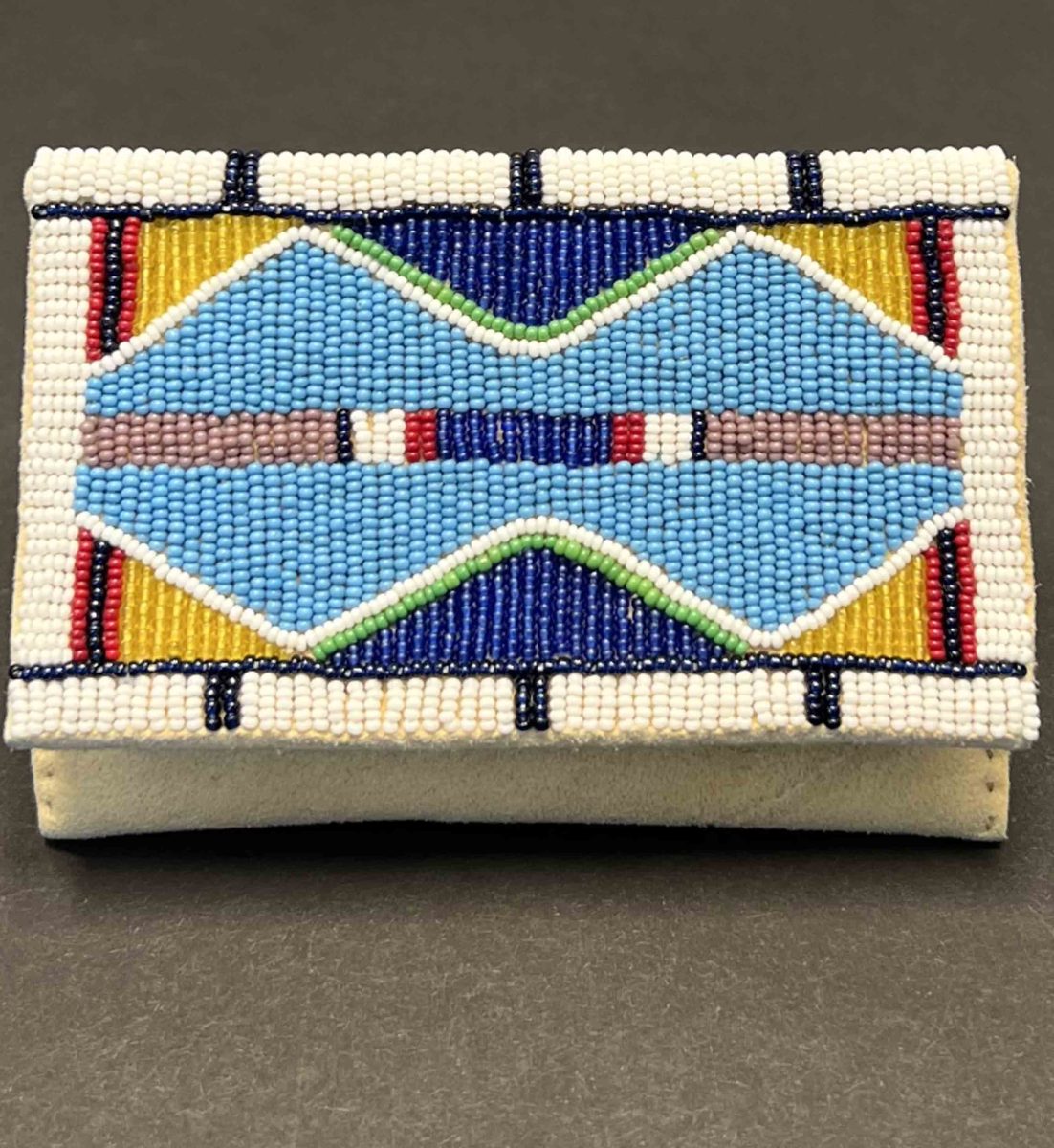Debra Box

Blue Middle with Violet Lane Beaded Business Cardholder
TRIBAL AFFILIATION:
Southern Ute Indian Tribe of the Southern Ute Reservation
CLASSIFICATION:
Beadwork and Quillwork, Diverse Arts
BOOTH NUMBER:
MAR 810
MATERIAL/TECHNIQUE:
Materials used: Smoked brained-tanned deer hides smoked; glass seed beads, vintage or newer, bead sizes 13-15; nylon beading thread, 00; beading needles and glovers needles; artificial sinew, and cotton or silk cloths for lining. Techniques: 1) I use a Lazy stitch. I string a number of beads, depending on the width of the lane, tack it down on the end then start a new row, string on beads, tack it down. 2) A one needle overlay stitch (Ute style), I string 4 to 5 beads on the thread, I lay the string of beads on the hide, take the needle and go halfway through the hide underneath to the 2 end beads of the string, then go through the middle of the beads. This tacks down this line of beads. I string 4 to 5 more beads to start a new line, underneath 2 beads and through the 2 end beads. Materials: raw beef hides; Tide laundry detergent; water; garbage can; wooden frame, 7' x 7'; nylon utility rope; hide scraper; leather shears; wooden mallet, pencils, earth pigments; egg whites and India ink. Adornments: Smoked brain-tanned deer hide for laces I go to the slaughterhouse and buy beef hides. I soak the hide with Tide detergent, changing the water daily. After 2 days I take the hide out of the water and stretch on a wooden frame. I let the hide air dry in the sun for a couple of weeks. When the hide is dry I use a hide scraper and scrape the hair and the fleshy, fatty side. Once this is done I leave the hide in the sun to bleach for a couple more weeks. When the hide is white I take it off the frame and can now use it for rawhide items. I cut out the rawhide using leather shears and fold the hides using a wooden mallet. I sketch out designs with a pencil and use earth pigments mixed with egg whites to apply to the hide. I outline the design in India ink.

